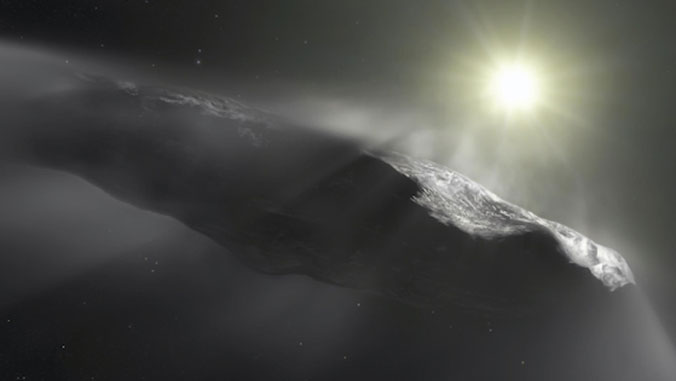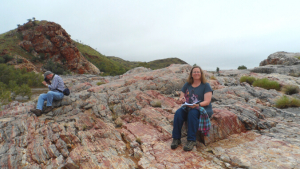
The American Institute of Physics and the American Astronomical Society (AAS), a major international organization of professional astronomers presented University of Hawaiʻi Astronomer Karen Meech with a coveted honor recognizing her trailblazing contributions in astrophysics.

AAS awarded Meech, a professor at the Institute for Astronomy (IfA), the Dannie Heineman Prize for her outstanding mid-career work, which has helped to expand and push boundaries in the field of small-body solar-system observational science.
Meech, who specializes in investigating how habitable worlds form, was also recognized for her transformative contributions that have shaped the broader field of planetary science.
“It was very exciting to get the news, and it feels especially rewarding to know that the area of research that I’m focusing on is highly valued by others,” said Meech. “It makes the work feel much more fulfilling to know that it is so highly regarded by others.”
Astronomical contributions
The award-winning astronomer thrives on exploring the possibility of life outside of Earth. In 2017, she led an international research team’s analysis of ʻOumuamua, the first interstellar object seen passing through the solar system. The stunning discovery spotted by the UH Pan-STARRS1 telescope continues to intrigue researchers across the globe.

Meech also uses clues from the solar system’s formation to provide information to test our understanding of how planetary systems are assembled and how habitable worlds form. Her career in astronomy began with investigating comets, the icy leftovers from the birth of our solar system. Meech’s research led to an understanding of many of the processes that cause comets to develop their characteristic tails far from the Sun.
An expert on comets, she was co-investigator on three NASA missions: Deep Impact, EPOXI and Stardust-NExT. She trained at Rice University and Massachusetts Institute of Technology (MIT), and has won numerous awards, including the Annie Jump Cannon Award, the Harold C. Urey Prize, and the UH Board of Regent’s Medal for Research Excellence.
Star Trek sparked inspiration
Meech grew up in Littleton, Colorado and was nurtured in science. Her father was a high school chemistry teacher, and her mother had a biology degree. She recalls her fascination with iconic television series Star Trek as a 7 year old, which ignited Meech’s capacity to ponder the possibility of exploring the cosmos.
“I originally was attracted to astronomy as a child because I loved sleeping out in the backyard under the stars, and science fiction stories generated a love for exploration,” Meech explained. “Astrobiology is the perfect fit, because it really is about investigating if there is life elsewhere. I hope that within my lifetime we will discover evidence of microbial life (extant or in the past) somewhere in our solar system.”
After graduating from MIT, Meech was offered a faculty position at IfA and has taught at the UH flagship campus since 1988.
Currently, Meech continues to work with colleagues to create an accessible database of her large collection of comet observations. She is also devising space mission concepts in an effort to address questions such as how Earth got its water. Farther down the road, she is determined to seek funding for a future sampling expedition in Greenland to research the origin of Earth’s water from a geological perspective.

